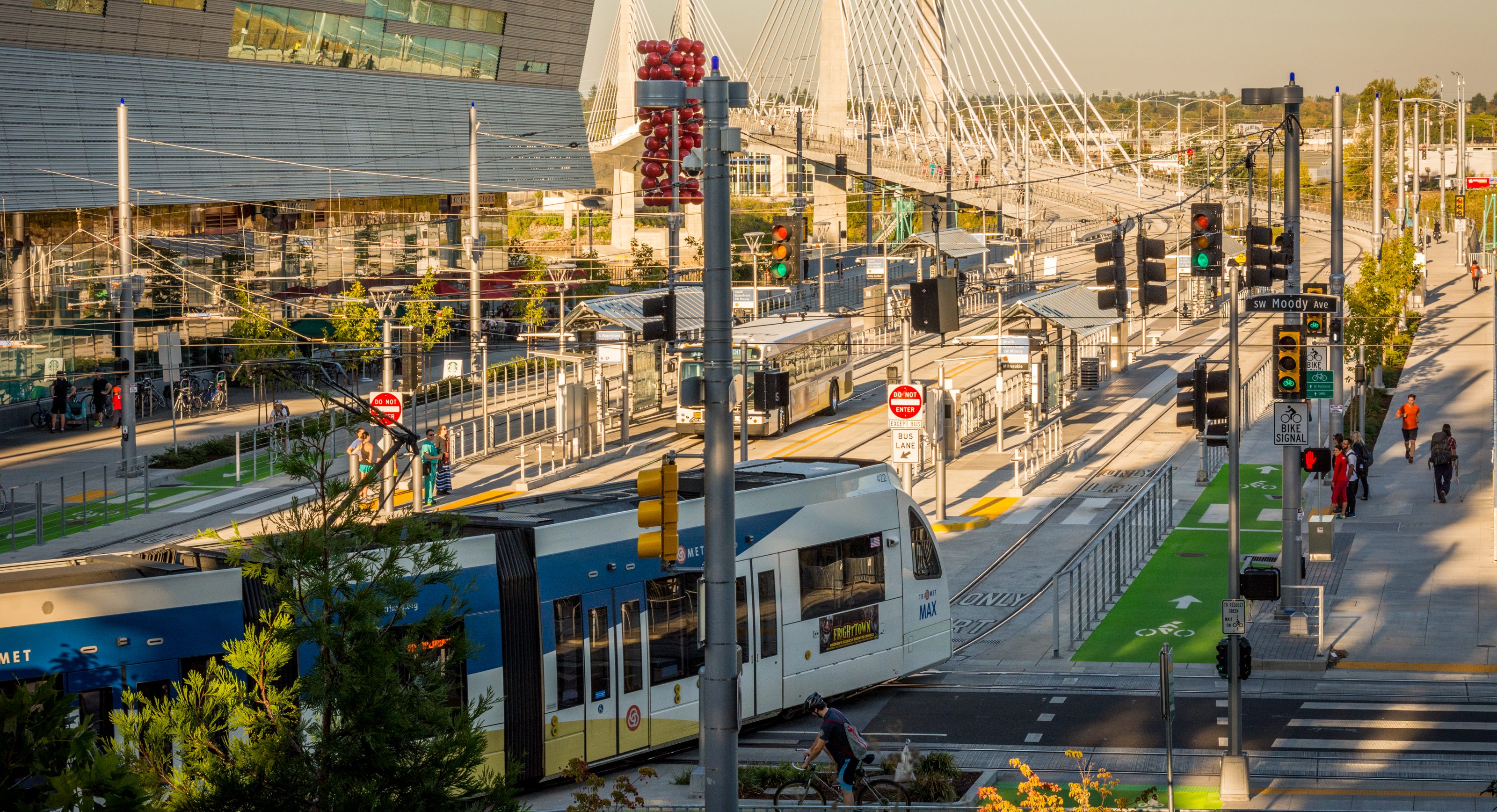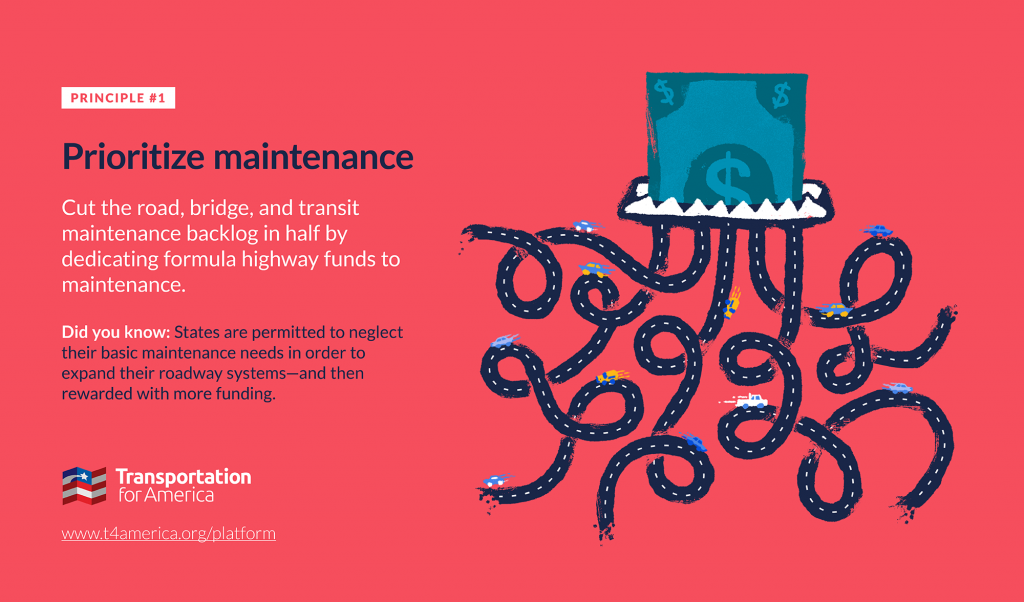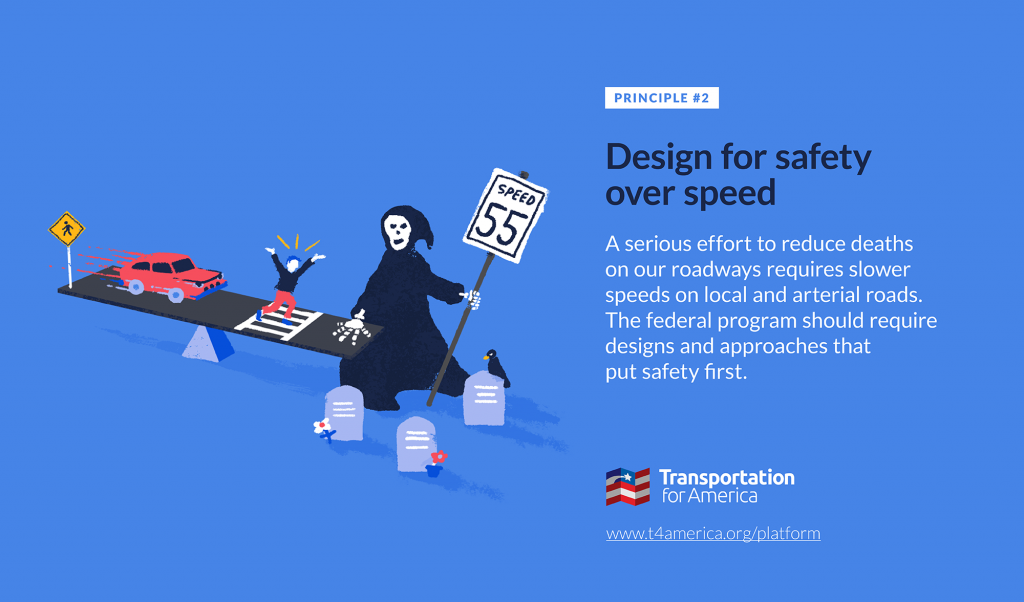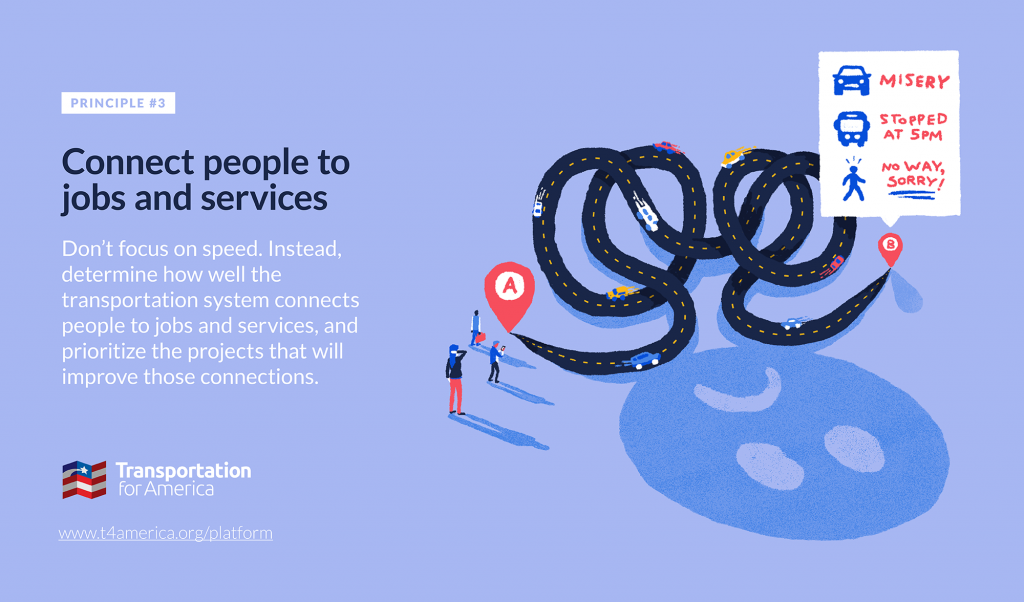
News
By Sean Doyle, October 7, 2019

What should we accomplish with the billions in transportation funding our federal government spends each year? That’s an open question that both parties in Congress have so far seemed unwilling to answer. But American taxpayers deserve better. New principles from Transportation for America, a program of Smart Growth America, seek to paint a picture of what we can—and should—get done. Congress should take note; it’s long past time for a reset of broken, aimless federal transportation policy.
When politicians, the media, and even advocates talk about transportation it’s almost always in the context of money. The perpetual question is how much more money we should to pump into “infrastructure” to fix our crumbling roads and bridges.
But all this talk of money misses the point. There are no goals, no outcomes, no vision for what that extra money—or our existing spending—should accomplish. We haven’t had a serious rethink of federal transportation policy since we embarked on our quest to construct the interstate highway system in the 1950s. But times have changed and our policy needs to change too.
This week, our Transportation for America released a new set of principles and outcomes that we’ll use to guide our advocacy and by which we’ll judge any infrastructure proposals—whether it’s a bill in Congress or a plan from a presidential candidate. The principles and outcomes are clear, simple, and measurable, just as our federal transportation policy should be.
Principle #1: Prioritize maintenance
Outcome #1: Cut the road, bridge, and transit maintenance backlog in half
For all the talk of our crumbling roads and bridges, there is nothing in federal policy that requires states to spend their federal highway funds on maintenance. Despite unprecedented high levels of funding for roads, states are allowed to spend more on expanding roads and building new ones than repairing what they have—which many states do. Congress should seek to cut the maintenance backlog in half by dedicating formula highway funds to maintenance. With this approach, the federal government can halve the current backlog in six years under current funding levels. For transit, the program is organized well in terms of addressing maintenance needs but does need more resources overall.
Principle #2: Design for safety over speed
Outcome #2: Save lives with slower, safer road design
Access to safe, convenient transportation is a fundamental right. Today, most Americans are denied this right because their roads—not just highways—are designed to move vehicles at the highest speeds possible, and are not designed for people walking, biking, or taking transit as a priority. Local and arterial roads must be designed to put safety first and federal transportation policy should require such designs. Roads surrounded by development—think main streets, commercial corridors, downtown and residential areas—should be designed for speeds of 35 mph or under to limit the risk of death in a crash. High speeds make sense on interstates and other highways, but fatalities occur when we design all streets for high speeds rather than designing them to connect people and create value.
Principle #3: Connect people to jobs and services
Outcome #3: Determine how well the transportation system connects people to jobs and services, and prioritize projects that will improve those connections
The point of transportation is to get people where they need to go. Since the dawn of the modern highway era, we have used vehicle speed as a poor proxy for access to jobs and important services like healthcare, education, public services, and grocery stores. But new technologies can now help us measure what really matters to real people: the ease of arriving at your destination. Congress should require the U.S. Department of Transportation (USDOT) to collect data on access to jobs and services, and set national goals for improvement. Federal funding should only go to transportation projects that will improve these connections, regardless of mode.
Taken together, these three simple principles and outcomes paint a vision for what the tens of billions we spend on transportation each year should actually accomplish for people. And if enshrined in future transportation policy, they will help create safer, more equitable, and more accessible communities across the country.
Learn more about each of these principles for federal transportation policy.
What’s not in our principles: more funding
Why in the world would we just pour more money into a program that is devoid of any vision for the future, and which has only led to more roads, more traffic, more pollution, more inequality and a lack of transportation options? We don’t have a funding problem, we have a policy problem. Policy directs how we spend transportation funding and in the absence of real reform, more money won’t fix our problems.
Taxpayers deserve to know what they’re getting for their spending. Today, they don’t, and nothing about the national infrastructure conversation has indicated that will change. So we’ve scrapped “provide real funding” from our core principles. Transportation for America—and by extension Smart Growth America—has concluded that more money devoted to this same flawed system will just do more damage.
Related News

© 2025 Smart Growth America. All rights reserved
Site By3Lane Marketing













